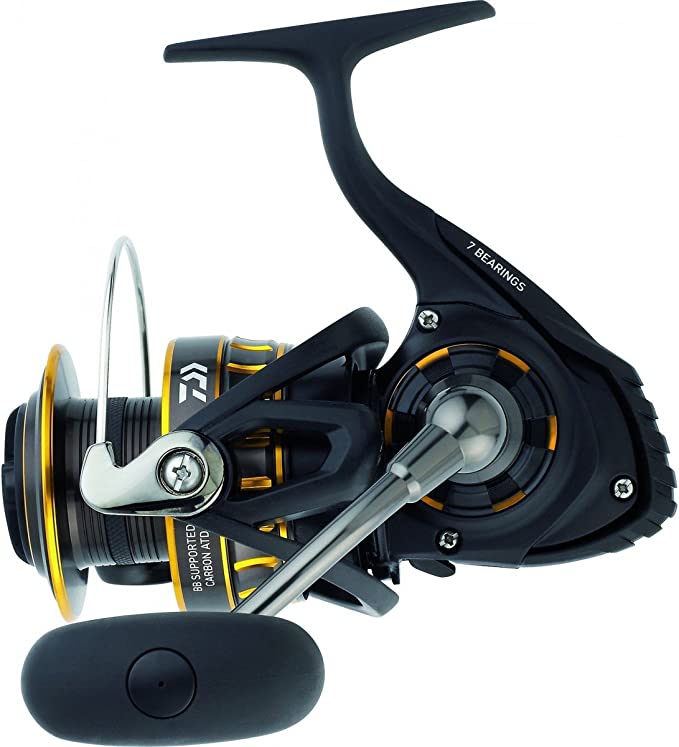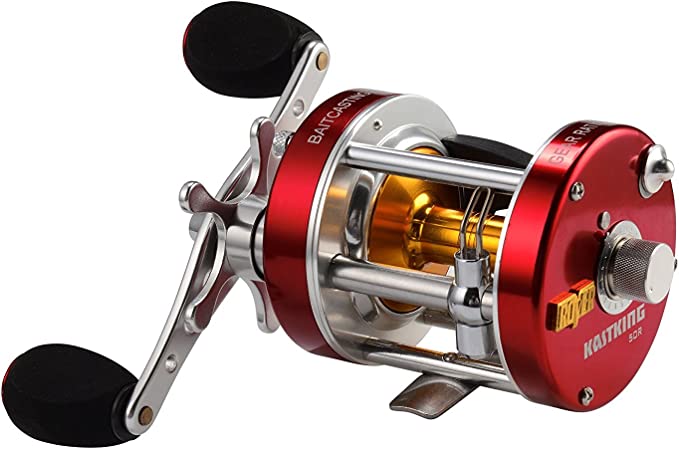Dawnice DWPF-R6KLNA 6000W Hybrid Solar Inverter: Power Your Home with Smart Energy
Update on March 5, 2025, 5:20 p.m.
The North American Energy Landscape: A Quest for Resilience
Across North America, homeowners are facing a growing set of challenges when it comes to their energy supply. Rising electricity prices, coupled with concerns about grid stability and the increasing frequency of extreme weather events, are driving a surge in interest in home energy solutions that offer greater independence and resilience. It’s no longer just about saving money; it’s about ensuring a consistent and reliable power supply, no matter what. This is where the concept of home energy storage, and specifically the hybrid solar inverter, comes into play.
What’s a Hybrid Inverter, Anyway?
Let’s start with the basics. If you have solar panels on your roof, you’re already familiar with the concept of an inverter. Its job is to convert the direct current (DC) electricity generated by your solar panels into the alternating current (AC) electricity that powers your home’s appliances and lights. A hybrid inverter takes this a step further.
Think of a traditional grid-tied inverter as a one-way street. It sends solar power to your home and, if there’s excess, back to the utility grid. A hybrid inverter, on the other hand, is like a sophisticated traffic controller at a busy intersection. It manages the flow of electricity from multiple sources – your solar panels, a battery bank, and the utility grid – and directs it to where it’s needed most.

Demystifying the Magic: How Hybrid Inverters Work
The “magic” behind a hybrid inverter lies in its ability to seamlessly switch between different power sources and operating modes. It constantly monitors the energy production from your solar panels, the energy consumption of your home, the state of charge of your battery bank, and the availability of the utility grid.
Based on these factors, it intelligently decides how to route the electricity. If your solar panels are producing more power than your home needs, the excess can be used to charge your batteries. If your home needs more power than the solar panels are producing, the inverter can draw power from the batteries or the grid, or a combination of both. And, crucially, if the grid goes down, the hybrid inverter can disconnect from the grid (a process known as “islanding,” for safety reasons) and continue to power your home using energy from your solar panels and batteries.

Enter the Dawnice DWPF-R6KLNA: A Closer Look
The Dawnice DWPF-R6KLNA 6000W Hybrid Solar Inverter is a powerful example of this technology, designed specifically for the North American market. It’s a 48V system, meaning it operates with a 48-volt battery bank, and it boasts a 6000W output capacity, enough to power a significant portion of a typical home’s electrical loads. But beyond the basic numbers, there are several key features that make this inverter stand out.
Why Split-Phase Matters: A North American Essential
One of the most critical features of the Dawnice DWPF-R6KLNA is its split-phase output. This is essential for North American homes, and here’s why. Unlike many parts of the world that use a single-phase 230V system, North America uses a 120V/240V split-phase system.
Imagine your home’s electrical service as a three-wire system. There are two “hot” wires, each carrying 120V relative to a neutral wire. Most of your standard outlets and lights use one of these hot wires and the neutral wire, providing 120V. However, larger appliances like electric dryers, ovens, and electric vehicle chargers require 240V. This is achieved by using both hot wires, which are 180 degrees out of phase with each other, resulting in a 240V potential difference.
A single-phase inverter can only provide one of these 120V legs, limiting its ability to power those larger 240V appliances. The Dawnice DWPF-R6KLNA, with its split-phase output, delivers both 120V legs, making it compatible with the full range of appliances in a typical North American home. The internal design uses a sophisticated topology, eliminating the need for bulky and inefficient transformers, which improves overall system efficiency.
MPPT: Squeezing Every Drop of Solar Power
Another crucial technology built into the Dawnice DWPF-R6KLNA is Maximum Power Point Tracking, or MPPT. Solar panels are fascinating devices, but their output isn’t constant. The voltage and current they produce vary depending on the intensity of the sunlight, the temperature of the panels, and other factors.
Think of it like trying to get the most water out of a slightly leaky hose. If you squeeze the hose too hard, the flow decreases. If you don’t squeeze it enough, you’re not getting all the water you could. MPPT is like having an intelligent hand constantly adjusting the “squeeze” on the hose to ensure you’re always getting the maximum possible flow of water – or, in this case, electricity.
The Dawnice DWPF-R6KLNA doesn’t just have one MPPT controller; it has four. This allows you to connect multiple strings of solar panels, each with its own independent MPPT tracking. This is particularly beneficial if you have panels on different parts of your roof that receive different amounts of sunlight throughout the day. Each string can operate at its maximum power point, regardless of the others. While the precise MPPT algorithm used by the DWPF-R6KLNA isn’t specified in the provided materials, common algorithms include “Perturb and Observe” (P&O) and “Incremental Conductance.” These algorithms constantly make small adjustments to the operating voltage and current, monitoring the resulting power output to find the sweet spot.
The Flexibility of Hybrid: Grid-Tied, Off-Grid, and Everything In Between
As a hybrid inverter, the DWPF-R6KLNA offers a range of operating modes to suit different needs and situations:
- Grid-Tied Mode: This is the most common mode. The inverter synchronizes with the utility grid, allowing you to draw power from the grid when your solar panels and batteries aren’t producing enough, and to send excess solar power back to the grid (if your utility allows net metering).
- Off-Grid Mode: During a power outage, the inverter automatically disconnects from the grid and creates its own independent microgrid, powering your home from your solar panels and batteries. This provides crucial backup power for essential appliances.
- Hybrid Mode: This mode combines the benefits of both grid-tied and off-grid operation. The inverter intelligently manages power flow from all available sources – solar panels, batteries, and the grid – to optimize energy efficiency, cost savings, and resilience. For example it can prioritize using stored battery power.
Battery Compatibility: Your Choice, Your Power
The Dawnice DWPF-R6KLNA is designed to work with a variety of 48V battery types, including the commonly used lead-acid, lithium-ion, and lithium iron phosphate (LiFePO4) batteries. It also specifically mentions compatibility with popular battery brands like Pytes, Pylontech, and Dyness. This flexibility is important because different battery technologies have different characteristics in terms of cost, lifespan, energy density, and safety. LiFePO4 batteries, for example, are known for their long lifespan, safety, and high discharge rates, making them a popular choice for home energy storage.
The DWPF-R6KLNA even supports a “batteryless mode,” where it can power loads directly from the solar panels or the grid without a battery connected. However, it’s important to understand that this mode won’t provide backup power during a grid outage.
Power in Numbers: The Advantage of Parallel Connection
For homes or businesses with larger energy needs, the DWPF-R6KLNA offers another significant advantage: the ability to connect up to three units in parallel. This effectively triples the power capacity of your system, allowing you to power more appliances or store more energy. This parallel configuration is designed to be seamless, with the inverters sharing a single battery bank, and working to balance State of Charge (SOC).
Beyond the Basics: Safety and Certifications
Safety is paramount when it comes to electrical systems, and the Dawnice DWPF-R6KLNA boasts several important certifications, including:
- UL 1741: This is a key safety standard for inverters and other grid-tied equipment in North America. It covers a wide range of safety requirements, including protection against electric shock, fire, and other hazards. The “SA” designation indicates compliance with grid support functions, which are increasingly required by utilities.
- UL1699B: Pertains to arc-fault protection.
- IEEE 1547.1: This standard specifies the testing and verification procedures for inverters to ensure they meet the requirements of IEEE 1547, which governs the interconnection of distributed energy resources (like solar inverters) with the electric power system.
- CAS C22.2: This refers to Canadian Standards Association standards, ensuring compliance with Canadian electrical safety requirements.
- CA Rule 21:This is a set of regulations in California that governs the interconnection of distributed generation resources, including solar inverters, to the utility grid.
These certifications provide assurance that the inverter has been rigorously tested and meets stringent safety and performance standards.

Real-World Applications: Powering Your Life
The Dawnice DWPF-R6KLNA isn’t just a technical marvel; it’s a practical solution for a variety of real-world energy needs.
- Everyday Savings: By using solar power during the day and storing excess energy in batteries for use at night, you can significantly reduce your reliance on the grid and lower your monthly electricity bills.
- Backup Power: During a power outage, the inverter seamlessly switches to battery power, keeping your essential appliances running – lights, refrigerators, medical equipment, internet routers, and more.
- EV Charging: If you own an electric vehicle (EV), you can use your solar power to charge it, further reducing your carbon footprint and your transportation costs. Imagine fueling your car with sunshine – that’s the power of combining solar energy and home energy storage.
- Remote Power: While the text provided focuses on residential applications, the Dawnice unit is robust. Its off-grid capabilities could provide a solution for remote cabins, or other locations that lack a reliable grid.
Looking Ahead: The Future of Hybrid Inverters
The Dawnice DWPF-R6KLNA represents a significant step forward in home energy technology, but it’s also part of a larger trend. Hybrid inverters are becoming increasingly sophisticated, with features like:
- Smart Home Integration: Future inverters will likely integrate seamlessly with smart home platforms, allowing you to monitor and control your energy usage from your smartphone or other devices.
- AI-Powered Optimization: Artificial intelligence (AI) is already being used to optimize energy management in some systems. AI can learn your energy usage patterns, predict solar production, and make intelligent decisions about when to charge and discharge your batteries, maximizing your savings and resilience.
- Grid Services: In some areas, utilities are starting to offer programs that allow homeowners with energy storage systems to participate in “virtual power plants” (VPPs). Your inverter could be used to help stabilize the grid, and you could be compensated for providing these services.
- Increased Efficiency and Power Density: Ongoing research into new materials and power electronics will continue to drive improvements in inverter efficiency and power density, meaning smaller, more powerful, and more affordable systems.
The Dawnice DWPF-R6KLNA, with its split-phase output, multiple MPPT controllers, broad battery compatibility, and parallel connection capability, is well-positioned to be a key component in the evolving landscape of home energy management. It’s not just about saving money or having backup power; it’s about taking control of your energy future and contributing to a more sustainable world. It’s about embracing the power of the sun and using it to power your life, your home, and your future.




































